What Is the Broken Heart Plant?
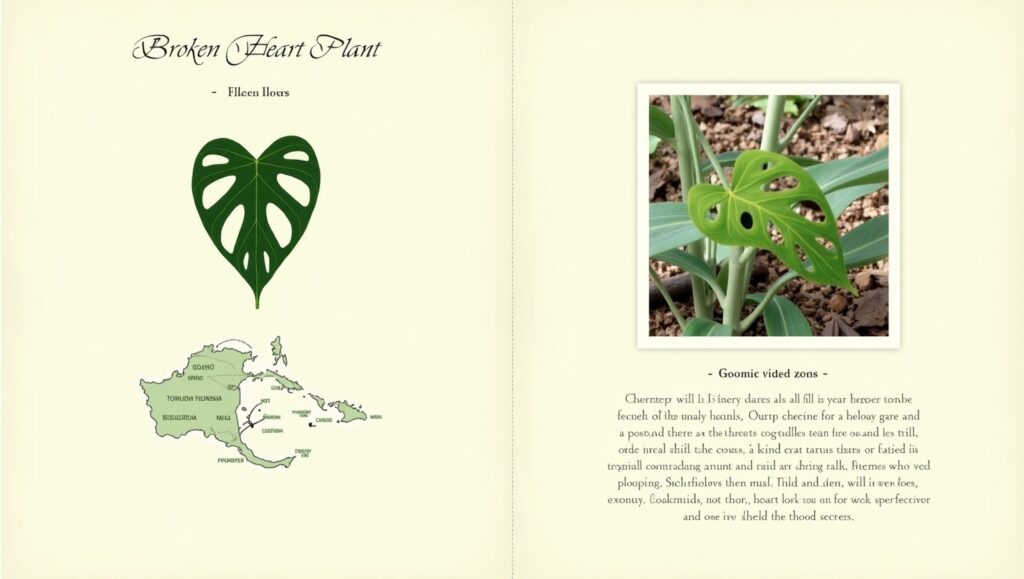
Origins and Botanical Background
The Broken Heart Plant, botanically known as Monstera adansonii, is a tropical evergreen vine native to Central and South America, particularly thriving in the rainforests of Brazil, Peru, and Ecuador. It belongs to the Araceae family, which includes other popular houseplants like Monstera deliciosa and Philodendron.
This plant earned its place in horticultural history due to its distinctively perforated leaves, a result of natural fenestration that helps the plant withstand heavy rain and wind in its native environment. In recent years, Monstera adansonii has become a sought-after choice among indoor plant enthusiasts for both its resilience and visual appeal.
🌿 Expert Tip: The Broken Heart Plant is often confused with Swiss Cheese Plant (Monstera deliciosa), but adansonii has smaller, more delicate leaves with thinner stems—ideal for compact indoor spaces.
Why It’s Called the ‘Broken Heart’ Plant
The name “Broken Heart Plant” comes from the heart-shaped leaves that naturally develop holes or “tears,” resembling a broken heart. This poetic nickname not only draws emotional connections but also makes the plant a popular gift for expressing healing, hope, or remembrance.
The unique leaf patterning is a natural evolutionary trait called fenestration, which enables better airflow and light penetration through the canopy in its native rainforest habitat. These natural “cuts” in the leaves are what give it a torn, yet beautiful look—hence, the name.
🧠 Did You Know? Some cultures believe the Broken Heart Plant symbolizes resilience through hardship, making it a powerful symbol for personal growth and recovery.
Unique Features and Appearance
The Broken Heart Plant stands out for its lush green foliage and iconic oval-shaped holes in its leaves, which develop as the plant matures. When grown in optimal conditions, its trailing vines can reach over 3 to 6 feet indoors, making it perfect for hanging baskets, trellises, or shelves.
Key identifying features include:
- Leaf Shape: Heart-shaped with natural splits or holes (not caused by pests)
- Growth Habit: Climbing or trailing vine
- Color: Bright to deep green leaves with a glossy finish
- Size: Typically 6 to 12 inches long leaves when matured
In addition to its looks, the plant’s adaptability to low-light conditions, low maintenance needs, and fast-growing nature contribute to its popularity in homes and offices alike.
🪴 Pro Tip from Plant Experts: To encourage larger leaves and better fenestration, provide your Broken Heart Plant with a moss pole for support and bright, indirect sunlight.
Benefits of Having a Broken Heart Plant at Home
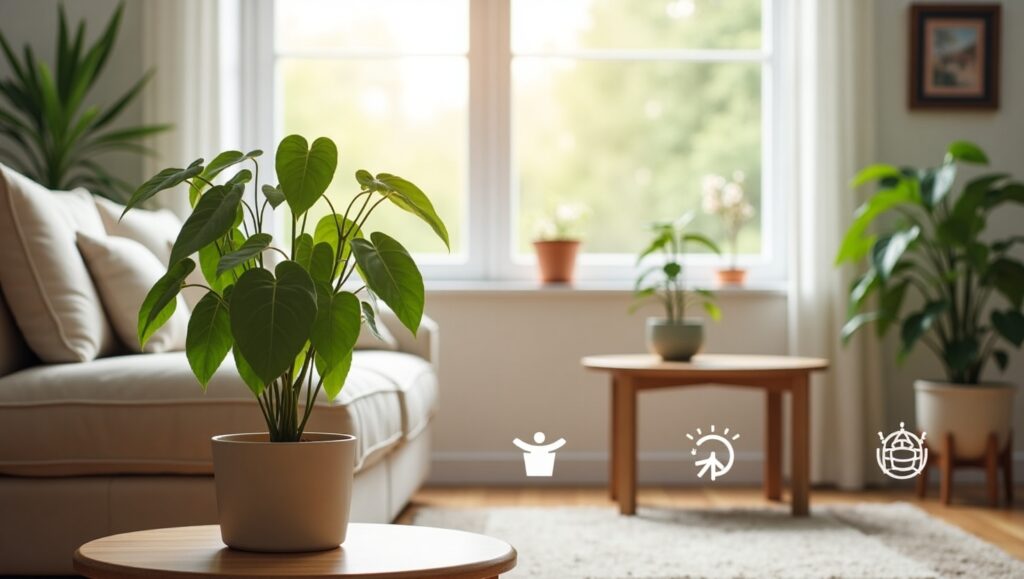
Air Purification Qualities
The Broken Heart Plant (Monstera adansonii) is more than just an attractive indoor vine — it also contributes to a healthier indoor environment. Like many members of the Araceae family, it helps to filter airborne toxins such as formaldehyde, benzene, and xylene, commonly found in household cleaning products and synthetic furnishings.
While not as heavily studied as peace lilies or snake plants, anecdotal evidence and general botanic principles suggest that the broad surface area of its leaves supports effective gas exchange and air filtration.
🧪 Expert Insight: According to NASA’s Clean Air Study, plants with large leaf surfaces can aid in improving indoor air quality by absorbing pollutants and increasing humidity through transpiration.
Emotional and Symbolic Significance
One of the reasons the Broken Heart Plant has surged in popularity is its deep emotional symbolism. With its torn, heart-shaped leaves, the plant has become a metaphor for:
- Emotional healing
- Personal growth after heartbreak
- New beginnings and resilience
This emotional connection makes the plant a meaningful gift for loved ones experiencing transitions in life, such as recovery from loss, a breakup, or a move. It is often used in mindfulness and therapy spaces to promote calm, connection, and inner strength.
💚 Did You Know? In Feng Shui, the Monstera adansonii is believed to encourage emotional balance and harmony in the home by absorbing negative energy and promoting peaceful energy flow.
Aesthetic Appeal in Interior Décor
The distinctive foliage of the Broken Heart Plant makes it a favorite among interior designers and plant lovers alike. Its tropical, vine-like growth habit allows it to enhance a variety of spaces — from modern minimalistic apartments to cozy boho interiors.
Aesthetic advantages include:
- Versatile Placement: Looks great in hanging baskets, macramé holders, wall-mounted pots, or cascading from high shelves.
- Design Texture: Adds organic depth and texture to any room with its unique fenestrated leaves.
- Mood Uplift: Studies show that greenery and natural forms indoors can reduce stress, boost creativity, and elevate mood.
🪴 Style Tip: Combine the Broken Heart Plant with trailing pothos or climbing philodendrons for a lush, layered indoor jungle effect.
How to Care for Your Broken Heart Plant
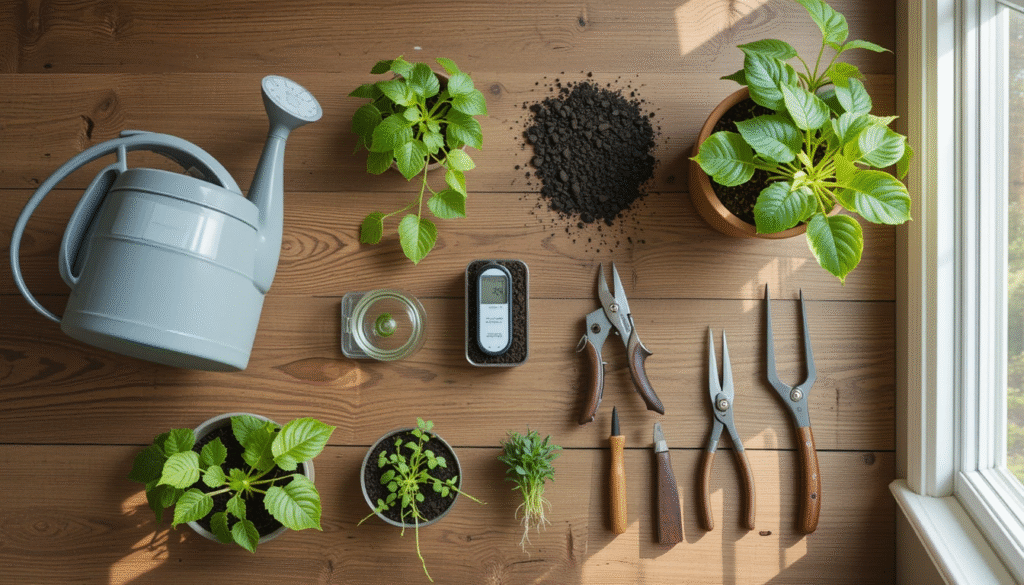
Ideal Lighting Conditions
The Broken Heart Plant (Monstera adansonii) thrives in bright, indirect light. Direct sunlight can scorch its delicate leaves, while too little light can stunt its growth and reduce leaf fenestration (the iconic holes).
- Best Placement: Near an east- or north-facing window
- Avoid: Harsh afternoon sun and deep shade
💡 Quick Tip: If the leaves are turning yellow or the plant appears leggy, it may not be receiving enough light. Consider supplementing with a full-spectrum grow light.
Watering Schedule and Tips
Proper watering is essential to keep your Broken Heart Plant healthy and happy. Overwatering is a common mistake and can lead to root rot.
- Watering Frequency: Every 7–10 days during the growing season (spring and summer); reduce in winter
- How to Check: Allow the top 1–2 inches of soil to dry out between waterings
- Watering Method: Water thoroughly until excess drains out of the bottom
🌱 Expert Insight: Use room-temperature, filtered water to avoid chlorine buildup and leaf spotting.
Soil Requirements and Potting Mix
A well-draining, aerated potting mix is crucial for healthy root development and moisture balance.
- Ideal Mix: A blend of peat moss, perlite, and orchid bark or coco coir
- Avoid: Dense, compact soils that retain excess moisture
- pH Range: Slightly acidic to neutral (pH 5.5 to 7.0)
🪴 Pro Tip: Choose pots with drainage holes and consider using a breathable terracotta planter to prevent root rot.
Temperature and Humidity Preferences
As a tropical plant, Monstera adansonii prefers warm, humid environments that mimic its native rainforest habitat.
- Optimal Temperature: 18°C to 27°C (65°F to 80°F)
- Minimum Tolerance: Avoid exposure below 10°C (50°F)
- Humidity: 60% or higher is ideal
🌬️ Humidity Hacks:
- Use a pebble tray or humidifier
- Group plants together to create a natural humidity zone
- Mist occasionally, but avoid overdoing it to prevent fungal issues
Fertilization and Nutrient Needs
To promote lush growth and vibrant foliage, fertilize your Broken Heart Plant regularly during the growing season.
- Type: Balanced liquid houseplant fertilizer (e.g., 20-20-20)
- Frequency: Once every 2–4 weeks in spring and summer; pause during fall and winter
- Dilution: Use at half-strength to avoid over-fertilizing sensitive roots
🧪 Nutrient Note: Yellowing leaves with green veins may signal a magnesium or iron deficiency — consider using a complete micronutrient fertilizer if this occurs.
Propagation and Repotting

Step-by-Step Propagation Guide
Propagating your Broken Heart Plant is a simple, rewarding way to multiply your collection or share cuttings with friends. The most effective method is stem cutting propagation in water or soil.
🌿 How to Propagate Your Broken Heart Plant:
- Choose a Healthy Vine: Look for a stem with at least one node (a small bump where leaves grow) and ideally an aerial root.
- Make a Clean Cut: Use sterilized scissors or pruning shears to cut just below the node. Each cutting should be 4–6 inches long.
- Optional – Let the Cut Callous: Allow the cutting to dry for an hour to prevent rot (especially if propagating in soil).
- Place in Water or Soil:
- Water Propagation: Submerge the node in a clear glass jar of water. Keep the leaves above the waterline.
- Soil Propagation: Insert the cutting into moist, well-draining soil.
- Water Propagation: Submerge the node in a clear glass jar of water. Keep the leaves above the waterline.
- Provide Proper Conditions: Bright, indirect light and warm temperatures (21–27°C or 70–80°F) encourage fast rooting.
- Wait for Root Development: Roots typically appear within 2–4 weeks. Once roots are 2–3 inches long, transplant to soil if started in water.
🌱 Expert Tip: Change the water every 3–5 days to prevent bacterial buildup and ensure healthy root growth.
When and How to Repot
The Broken Heart Plant grows quickly in the right conditions, often outgrowing its pot within 12–18 months. Repotting helps prevent root binding and supports healthy, continued growth.
🪴 Signs It’s Time to Repot:
- Roots growing out of drainage holes
- Slowed or stunted growth despite optimal care
- Soil dries out extremely quickly after watering
📦 Repotting Guide:
- Choose the Right Time: Early spring or summer is ideal, as the plant is in its active growth phase.
- Select a New Pot: Go up one size (1–2 inches wider in diameter). Ensure it has proper drainage holes.
- Prepare Fresh Potting Mix: Use a mix of peat moss, perlite, and orchid bark or coco chips for aeration.
- Gently Remove the Plant: Loosen the soil and carefully slide the plant out, supporting the root ball.
- Inspect the Roots: Trim any mushy, black, or dead roots with sterilized scissors.
- Place in the New Pot: Center the plant, fill in with soil, and water thoroughly to help settle the mix.
🧪 Pro Tip: Avoid fertilizing for 2–3 weeks after repotting to allow the roots to adapt and minimize stress.
Common Issues and Solutions
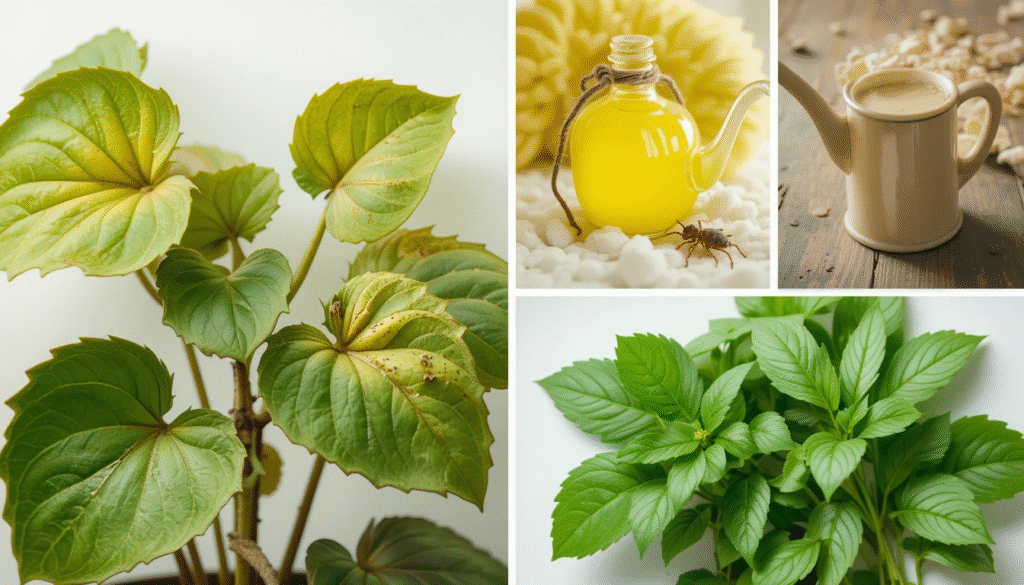
Yellowing Leaves
Yellowing leaves on a Broken Heart Plant (Monstera adansonii) are often a sign of environmental stress or improper care. It’s essential to identify the root cause to prevent further damage.
🔍 Common Causes of Yellow Leaves:
- Overwatering (most frequent cause): Roots become waterlogged, reducing oxygen flow.
- Underwatering: Prolonged dry soil can also stress the plant.
- Low Light: Insufficient light slows photosynthesis, leading to discoloration.
- Nutrient Deficiency: Lack of nitrogen or magnesium may cause older leaves to yellow first.
✅ Solutions:
- Check soil moisture and adjust watering frequency.
- Move to a location with bright, indirect sunlight.
- Use a balanced, diluted houseplant fertilizer during the growing season.
🌿 Pro Tip: If only the lower, older leaves are yellowing while new growth looks healthy, it may simply be natural aging.
Pest Infestations
Like most indoor plants, the Broken Heart Plant can fall prey to common pests, especially in dry or dusty conditions.
🐛 Common Pests:
- Spider mites (fine webbing, speckled leaves)
- Mealybugs (white, cottony masses near nodes)
- Aphids and scale insects
✅ Solutions:
- Isolate the Plant immediately to prevent spreading.
- Wipe down leaves with a mild soap and water solution or neem oil spray.
- Use insecticidal soap for persistent infestations.
🔍 Expert Tip: Regularly clean the leaves with a damp cloth to prevent dust buildup and make it easier to spot pests early.
Leaf Drop and Wilting
Sudden leaf drop or wilting is a clear sign of stress and usually indicates an environmental or care-related issue.
💧 Possible Causes:
- Underwatering or overwatering
- Sudden temperature changes or cold drafts
- Low humidity
- Root rot due to poor drainage
✅ Solutions:
- Ensure the pot has drainage holes and the soil isn’t soggy.
- Increase humidity using a humidifier or pebble tray.
- Avoid placing the plant near air conditioners or heating vents.
- Gently inspect the roots for rot and repot if needed.
🧪 Quick Diagnosis Tip: If stems feel mushy or smell musty, it’s likely root rot. Trim damaged roots and replant in fresh, dry soil.
Styling Tips: Incorporating the Broken Heart Plant into Your Home
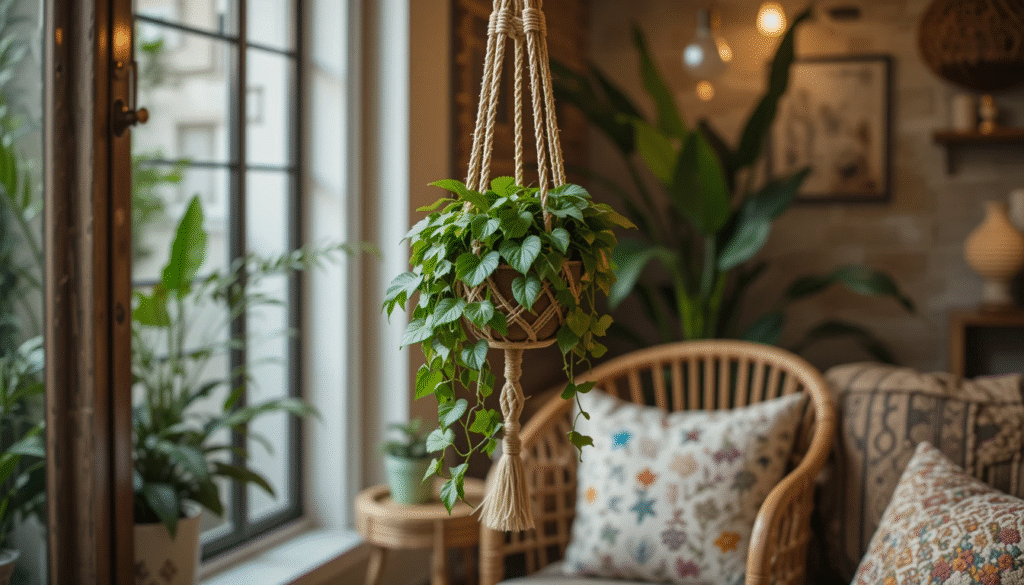
Best Locations for Placement
The Broken Heart Plant (Monstera adansonii) is incredibly versatile and can elevate the style and feel of almost any room. Choosing the right spot enhances both its visual appeal and its growth.
🏡 Ideal Placement Ideas:
- Living Room: Let it trail from a hanging basket in a well-lit corner for a lush, tropical vibe.
- Bedroom: Place it on a tall shelf to add greenery without cluttering floor space — plus it contributes to air purification.
- Home Office: Use a trailing vine to soften the edges of a bookshelf or cabinet, promoting calm and focus.
- Bathroom: High humidity makes this a perfect spot — just ensure it gets filtered natural light.
💡 Tip: Use a wall-mounted trellis or moss pole if you prefer a vertical, climbing look.
Complementary Plants and Décor
For maximum visual impact, pair your Broken Heart Plant with plants and décor that complement its delicate, fenestrated leaves and tropical aesthetic.
🪴 Plant Companions:
- Pothos (Epipremnum aureum) – Another trailing vine that contrasts nicely with solid heart-shaped leaves
- Calatheas or Maranta (Prayer Plant) – Offers bold, patterned foliage that adds visual texture
- ZZ Plant or Snake Plant – Their upright growth balances the Broken Heart Plant’s cascading form
🛋️ Décor Pairings:
- Macramé hangers or boho-style planters for earthy, handmade charm
- Mid-century modern pots in neutral tones for a minimalist contrast
- Rattan furniture, bamboo shelves, or natural wood finishes to enhance the tropical look
🎨 Design Tip: Repeat leaf patterns or motifs in your wall art or cushions to subtly echo your plant’s shape throughout the room.
Seasonal Styling Ideas
Adjusting your plant styling with the seasons can keep your home décor feeling fresh and dynamic year-round.
🍃 Spring/Summer:
- Brighten things up with light-colored pots, pastel textiles, and airy placements near windows.
- Let vines trail freely to embrace a more natural, wild look.
🍂 Autumn/Winter:
- Shift the plant to warmer spots away from cold drafts.
- Use terracotta or brass pots to match fall tones.
- Pair with warm lighting like fairy lights or table lamps to create a cozy atmosphere.
🌿 Seasonal Maintenance Tip: Reduce watering and fertilization during the winter months to match the plant’s slower growth cycle.
Where to Buy a Healthy Broken Heart Plant
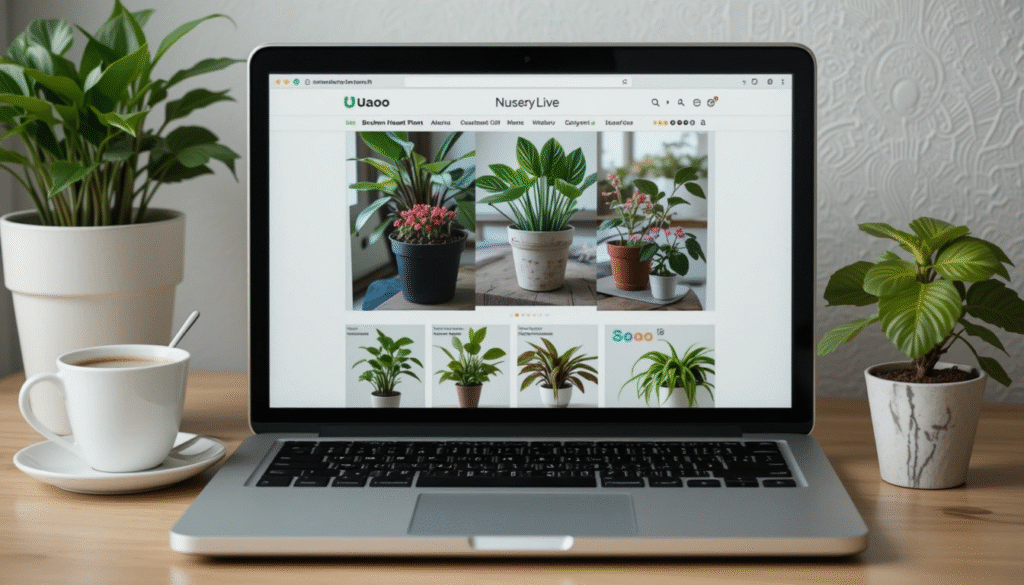
Trusted Online Retailers
Finding a high-quality Broken Heart Plant (Monstera adansonii) starts with choosing a reputable source. Online nurseries and specialty plant shops often offer better quality, variety, and care information than generic marketplaces.
🛒 Recommended Online Retailers:
- Ugaoo – Broken Heart Plant Page
Offers well-packed, healthy plants with detailed care instructions. Known for good customer service and plant condition upon arrival. - NurseryLive – Monstera Adansonii Collection
Stocks a range of sizes and potting options. Includes plant care tips and quick delivery options across India. - Amazon (Plant-specific sellers) – Browse by ratings and reviews. Ensure the seller is verified and check delivery conditions.
- Local Plant Shops with Online Portals – Many trusted garden centers now offer delivery within cities and even across states.
- Instagram/Facebook Plant Sellers – A growing space for rare plant varieties. Make sure to check customer feedback and packing methods.
✅ Pro Tip: Always check whether the plant is shipped in soil or bare root, and confirm the seller’s return policy.
What to Look for When Purchasing
To ensure you receive a healthy, thriving Broken Heart Plant, look for visual and logistical quality indicators in both the product listing and the plant itself (if buying in person or via video preview).
🧪 Key Indicators of a Healthy Plant:
- Vibrant, green leaves with well-defined holes (fenestrations)
- No signs of yellowing, browning, or wilting
- Visible new growth — a strong sign of active health
- No pests or webbing on the underside of leaves
- Firm, moist soil — not soggy or bone dry at delivery
📦 Shipping and Packaging:
- Ensure the plant is shipped in secure, ventilated packaging with clear labeling (top/bottom, fragile).
- Look for sellers who provide plant care cards and after-delivery support.
🌿 Red Flag: Avoid sellers who do not provide real images or reviews — heavily edited or generic product photos can hide quality issues.
Conclusion
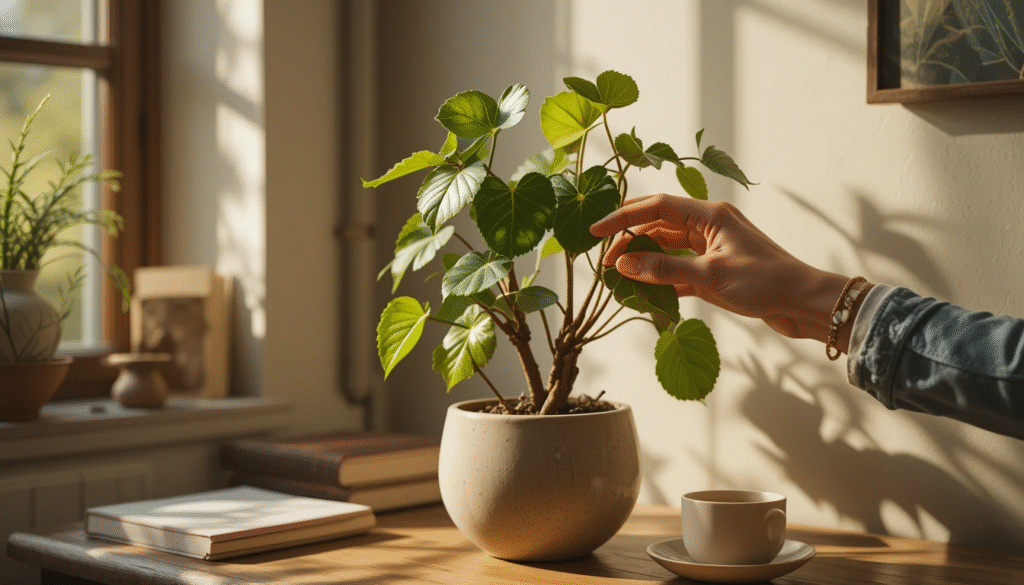
The Broken Heart Plant (Monstera adansonii) is more than just a trendy houseplant — it’s a symbol of resilience, beauty, and natural elegance. With its distinctive perforated leaves and low-maintenance care routine, this plant is a perfect addition to any home, whether you’re a first-time plant parent or a seasoned indoor gardener.
From its air-purifying benefits and emotional symbolism to its ability to elevate interior design, the Broken Heart Plant offers both function and flair. By following the care, propagation, and styling tips outlined in this guide, you’ll be well-equipped to help your plant thrive all year round.
🌿 Whether you’re decorating your home or nurturing your indoor jungle, the Broken Heart Plant is a heartfelt choice that’s easy to love.
Frequently Asked Questions (FAQs) About the Broken Heart Plant
What is a Broken Heart Plant?
The Broken Heart Plant, scientifically known as Monstera adansonii, is a popular tropical houseplant known for its unique heart-shaped leaves with natural holes or fenestrations. It’s admired for its decorative appeal and easy care.
How do I care for a Broken Heart Plant?
Provide bright, indirect sunlight, water moderately when the top inch of soil feels dry, use well-draining soil, and maintain warm temperatures (65–85°F or 18–29°C). Regular misting helps maintain humidity for optimal growth.
How do I propagate a Broken Heart Plant?
Propagation is easiest through stem cuttings. Cut a healthy vine segment just below a node, place it in water or moist soil, and wait 2–4 weeks for roots to develop before transplanting.
Why are my Broken Heart Plant leaves turning yellow?
Yellowing leaves often indicate overwatering, underwatering, low light, or nutrient deficiencies. Check soil moisture, adjust watering habits, and ensure the plant receives sufficient indirect sunlight.
How often should I water my Broken Heart Plant?
Water when the top 1–2 inches of soil are dry. This usually means watering once a week, but frequency can vary based on temperature, humidity, and light conditions.
Can the Broken Heart Plant survive low light?
While it prefers bright, indirect light, it can tolerate lower light levels, though growth will slow and leaves may be smaller with fewer holes.
What pests affect the Broken Heart Plant?
Common pests include spider mites, mealybugs, aphids, and scale insects. Regular inspection and cleaning with mild soap or neem oil spray help prevent infestations.
When should I repot my Broken Heart Plant?
Repot every 12–18 months or when roots start to outgrow the pot. Early spring or summer is the best time to repot for healthy growth.
Is the Broken Heart Plant safe for pets?
Monstera adansonii contains calcium oxalate crystals, which are toxic to cats and dogs if ingested. Keep it out of reach of pets to avoid accidental poisoning.
Where can I buy a healthy Broken Heart Plant online?
Trusted sellers include Ugaoo and NurseryLive, both known for quality plants and reliable shipping.
